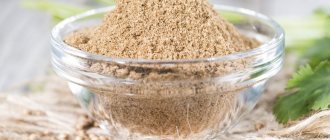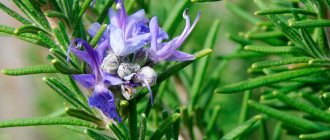Some people don’t practice this crop because they don’t eat it, some don’t know about its beneficial properties, and some simply don’t know how to grow root celery. If you belong to the third category of summer residents, make sure that this is definitely up to you.
Root celery, like its leafy counterpart, is valuable for its composition. 150 g of celery contains 80% of the daily requirement of vitamin K, which is necessary for proper blood clotting and bone health. At the same time, you can eat it either separately or in combined salads. The nutty-spicy taste of celery root is immediately memorable and rarely seems unpleasant to anyone.
What is celery?
It is a green vegetable grown for its aromatic and juicy stems, roots and leaves. It is in demand mainly as a seasoning with a characteristic strong spicy aroma and a pleasant bitter-sweet taste.
All parts of celery are edible - leaves, roots, stalks and seeds. Particularly popular in European and Asian cuisine.
What celery looks like - photo
Celery petioles
The root appears hairy, bumpy and brown. However, if you clean it, it becomes smooth and white.
Celery seeds are similar in appearance to caraway seeds. They have a dark brown color, an oblong shape with thin vertical ribs, and a very strong aroma.
general description
This is a fairly powerful, up to 1 m in height, annual or biennial plant with large leaves on long petioles, branched stems and a powerful root system.
Belongs to the Apiaceae family, which also includes parsley, carrots, fennel, coriander, parsnips, caraway and others. Its other names: celery, sweet parsley.
The most famous type is celery (Apium graveolens).
There are two other important types of celery in this plant variety:
- Root - has a large, fleshy root that is especially prized for its unique nut-like flavor. The rhizome is round in shape, the size of an apple, with a very strong pleasant aroma. The scientific name of this species is Apium graveolens var. Rapaceum.
- Leafy (Apium graveolens var. secalinum), which is very similar to parsley, but tastes like celery. Forms a developed rosette of delicate leaves of bright green color.
No matter what type you choose to buy or grow, benefits can be found in all parts of the plant, including leaves, stems, roots and seeds. They are all used for food, both fresh and dried.
Forcing root vegetables into fresh herbs
When preparing root crops for winter storage, some of them are used for forcing into fresh herbs. Tubers weighing up to 250 g are selected. The leaves of root crops are cut to a 7 cm stump. After 30-40 days of forcing, you can cut the green leaves for fresh use. During the winter-spring period, leaves can be cut 3-4 times from each root crop.
Celery root.
For forcing, root crops are planted tightly in containers with sides of 12-16 cm. The soil around the root crops is compacted. The planting is systematically watered. The temperature during the day is maintained at +15..+19 °C, and at night +10..+12 °C. No fertilizing is carried out during forcing.
How to choose celery
In the store, buy fresh, elastic leaves and bright green petioles. Avoid wrinkled stems, wilted, yellow or spoiled leaves. The darker the color, the stronger the aroma.
High-quality celery seeds are grayish-green or light brown in color, uniform in size, with a strong characteristic odor without foreign or chemical tones. The spice should not contain rotten, moldy or insect-damaged fruits, as well as a large number of stalks, stems, leaves, split fruits, and debris. The seeds should not crumble when pressed.
Celery root may not look very pretty, but it's delicious and versatile. Choose roots that are firm and heavy for their size. Small ones are more tender than large ones, which can be very fibrous. If there are greens or stems at the top, they should be fresh, not dried out, slimy or wilted.
Celery is known to be exposed to many pesticides. Be sure to wash it thoroughly. Buy organic products whenever possible.
Seedling care
Usually after a week (provided that the seeds have been germinated), the first shoots appear - the shelter is gradually removed.
When the bulk of the seedlings rise, the seedlings will need a lot of light and a lower temperature, about 15 degrees.
This is important so that the seedlings do not stretch out and grow strong.
When sowing into a common container, celery seedlings are planted when the sprouts have 4 true leaves.
For picking, prepare the same soil as for sowing.
Transfer the seedlings with a lump of earth into separate containers, preferably into peat-humus pots, so that when transplanting into open ground the root system is not disturbed.
They are buried only to the base of the leaves, so as not to cover the growth point - the center of the rosette.
For seedlings growing in individual pots, picking is also needed at this time, but it involves something else.
Since 2-3 seeds are planted, it is possible to choose the strongest, strongest, most promising one from the grown sprouts.
The rest should be pinched off under the spine, but not pulled out, so as not to damage the selected specimen.
How and how much to store
Celery root retains its properties well for several months if kept in a cool, dark place. Place it in the refrigerator, wrapped in a plastic bag. Do not wash or peel celery root before storing - peeled vegetables quickly oxidize and spoil. Sticky bits of soil help root vegetables stay fresh longer.
Celery greens should not be stored at room temperature, as moisture will quickly evaporate from them, which will lead to wilting within a few hours. Place the celery in the vegetable drawer of the refrigerator for up to two weeks.
All parts of the plant retain their scent well when dried. At home, it is better to dry the leaves in the shade, cut the roots into strips and dry them in an oven at low temperature or in an electric vegetable dryer. The shelf life of dried celery is up to two years, if stored in hermetically sealed containers.
It is convenient to store the petioles frozen.
How to freeze
- Wash it thoroughly to remove dirt. Remove rough parts and those that have changed color.
- Cut the stalks into a shape that you can easily use in soups or stews. This will make it easier to work with frozen products in the future.
- Plunge the chopped celery into boiling water for three minutes, then immediately cool in a bowl of ice water. You can skip this step if you use up the frozen celery within two months. But for longer storage, blanching will stop the enzymatic processes in the plant and destroy bacteria and mold.
- Place the celery on a baking sheet and place in the freezer for several hours.
- Pack it for freezer storage: place it in a plastic bag or plastic container. Think ahead about how you'll use it and pack it in portions that will fit your future meals. Be sure to label the date you froze the celery.
If frozen this way, use it within 12-18 months.
Store frozen celery that has not been blanched for more than two months.
Late
These varieties are successfully grown even in Siberia. Their maturation occurs within 200 days. Adult crops are not afraid of frost. They are also suitable for long-term storage during the winter.
Anita
This type can even be used for industrial production. Vegetables have a smooth surface and reach a weight of 0.3–0.4 kg. The leaves form a tall rosette. Inside the root crop there is juicy white pulp.
This plant is frost-resistant. It can tolerate air temperature drops down to -4 degrees.
Anita reacts sharply to the lack of humidity and loves fertile soils. If the required temperature conditions are observed, root vegetables can be stored for a long time.
Use of celery in cooking
This flavorful vegetable is so versatile that all parts can be used to create a delicious dish.
How to prepare celery stalks and leaves:
- Separate the stems from the bunch and wash them in cold water to remove any contaminants, fungicides and pesticides.
- Since this spice contains a lot of fiber, remove the tough ends of the petioles (the large white section at the bottom of each stem).
- Using a vegetable peeler, peel each stem while holding the base on a cutting board. If the petiole is quite tender, skip this step.
- Cut the celery into pieces of the required size.
If your celery greens are a little wilted, you can revive them by soaking them in ice water for an hour.
How to peel celery root:
- Place the celery root on its side on a cutting board and cut off the top and bottom.
- Place the root vertically. It must be sustainable.
- Cut off the remaining peel in vertical strips from top to bottom, following the shape of the root. Continue cutting until all the skin is removed.
- Cut the root into cubes or slices and rinse quickly in water and lemon or orange juice to prevent discoloration (oxidation).
How much and when to add
The smell of celery in large quantities can “overwhelm” all other seasonings, so it is added sparingly to the mixture.
Like other fresh spices, it is better to add petioles and herbs to dishes 10-15 minutes before readiness, stems - coarsely chopped, leaves - tied in a bunch.
In dishes that require long-term cooking, it is more convenient to add celery roots, cut into large pieces, in the middle and towards the end of cooking.
What dishes do they put it in?
This flavorful vegetable is so versatile that all parts can be used to create a delicious dish. Here are some tips on where to add celery:
- Fresh leaves, roots and stems for salads and stews.
- Puree soups made from celery root vegetables are very popular.
- Used as a side dish in various dishes. It goes well with vegetables such as potatoes, carrots, legumes, and poultry.
- Fresh leaves, petioles and roots - when preparing soups and sauces.
- Use the tender leaves as you would any herb: finely chop, tear with your hands, or leave whole. Toss them in green salads or vinaigrettes, stir-fries, soups and sauces. Decorate the dish with twigs before serving.
- Try celery juice combined with cucumber, kale and apple for a refreshing drink. This vegetable adds a vibrant aroma and flavor without being too sweet. Also try it in cocktails: it goes well with tequila or gin.
- Roast thinly sliced celery root with chicken, beef or turkey. It cooks quickly but remains crispy.
- Add crushed root to mashed potatoes for a savory taste and aroma.
- The best uses for frozen celery stalks are for stuffing, soups, stews and sauces. You can add it to a dish straight from the freezer without thawing.
- Grated roots and chopped celery greens are mixed with chopped sweet peppers, carrots, parsley, and 20% salt is added to the total weight of the vegetable mixture. The result is a universal seasoning that stores well in the refrigerator. It is used instead of salt to season potato and cereal soups.
- Seasonings with celery seeds go well with grilled meats (especially pork ribs), tomato and vegetable soups, meat and chicken broths, omelettes and marinades.
Celery soup (for weight loss) – video
Salad with celery and apple – video
Contraindications
However, it is worth remembering that in some cases it would be wise to refrain from consuming this plant.
This is especially true for people suffering from stomach ulcers, pregnant women and nursing mothers, as well as people with varicose veins.
For them, celery itself and dishes that contain celery can be harmful.
It is not for nothing that celery is considered one of the most widespread and popular vegetable crops and is grown and consumed everywhere. Nowadays, there is, perhaps, not a single country left where the importance and usefulness of this vegetable crop has not yet been recognized. Of course, many may be put off by the slightly unattractive appearance of celery, but, as they say, the main thing is not appearance, and do not forget that in fact celery is very tasty and very healthy.
Chemical composition
Nutritional value of fresh celery (Apium graveolens) per 100 g.
| Name | Quantity | Percentage of daily value, % |
| Energy value (calorie content) | 16 Kcal | |
| Carbohydrates | 3 g | 5,5 |
| Protein | 3.46 g | 6 |
| Fats | 1.12 g | 4,5 |
| Dietary fiber | 2.10 g | 5,5 |
| Folates | 36 mcg | 9 |
| Niacin | 0.320 mg | 2 |
| Pantothenic acid | 0.246 mg | 5 |
| Pyridoxine | 0.074 mg | 6 |
| Riboflavin | 0.57 mg | 4 |
| Thiamine | 0.021 mg | 2 |
| Vitamin A | 449 IU | 15 |
| Vitamin C | 3.1 mg | 5 |
| Vitamin K | 29.3 mcg | 24 |
| Sodium | 80 mg | 5 |
| Potassium | 260 mg | 5,5 |
| Calcium | 40 mg | 4 |
| Copper | 0.35 mg | 4 |
| Iron | 0.20 mg | 2,5 |
| Magnesium | 11 mg | 3 |
| Manganese | 0.103 mg | 4,5 |
| Phosphorus | 24 mg | 3 |
| Zinc | 0.13 mg | 1 |
| Carotene-ß | 270 mcg | — |
| Lutein-zeaxanthin | 283 mcg | — |
Russian size
It is characterized by large-sized vegetables, weighing up to 2.5 kg. The yield is influenced by the quality of the site chosen for planting: sufficient lighting and fertile soil.
The regime of watering and feeding the plant should be strictly observed.
The core has a fragrant odor and a nutty flavor. On average, the fruit weighs from 08 to 1.3 kg.
Vegetable harvesting occurs at the end of September-October.
On a note ! The root crop is suitable for growing in central Russia and cool regions.
Health Benefits
Celery is one of the lowest calorie plants. The leaves contain only 16 calories per 100g and are also high in insoluble fiber (fiber), which is beneficial for digestion. When combined with other weight loss methods, celery helps reduce weight and regulate blood cholesterol levels.
Experts say that celery has negative calories. This means that eating this vegetable burns more calories than it contains. This property is explained by the high content of dietary fiber, the digestion of which requires calories. Because of this, celery is considered one of the best foods for weight loss.
Leaves and petioles
Beneficial properties that you will get from consuming celery:
- Cancer prevention. Polyacetylene compounds present in celery are chemically protective and prevent the occurrence of cancers, particularly breast, lung, intestinal, colon, pancreatic and leukemia. It boosts the immune system, thereby preventing mutated cells from proliferating and forming tumors.
- Source of flavonoids. The bioactive flavonoids in celery, apigenin and luteolin, fight free radicals in the body and kill cancer cells, depriving them of food to grow and reproduce. The antioxidant flavonoids and polyphenolic phytonutrients in celery improve liver, skin, eye and mental health.
- Prevents cardiovascular diseases. Pharmacological studies have shown that celery's beneficial antioxidant and anti-inflammatory properties improve blood pressure and cholesterol levels, and prevent many types of heart disease.
- Reduces blood pressure. Modern scientific research confirms the beneficial properties of celery for lowering blood pressure, which have long been used in folk medicine. This is due to its potassium and phthalide content, compounds that relax the muscles around the arteries. Coumarin, another antioxidant in celery, enhances the activity of white blood cells. Celery has a diuretic effect, so it plays a role in eliminating excess body fluid.
Seeds
- Celery seeds contain limonene, coumarin and apigenin. They provide health benefits by fighting inflammation, which increases the risk of cancer, heart disease and other problems.
- One teaspoon of the seeds of this spice provides 35 mg of calcium and 0.9 mg of iron, as well as 0.5 mg of manganese. The mineral content is relatively low compared to the daily value, but quite significant considering the small number of seeds.
- Celery seeds are rich in flavonoids. These are antioxidants that provide pigmentation in plants and prevent cell damage.
Used to treat conditions such as:
- Arthritis.
- Gout.
- Muscle spasms.
- Anxiety.
- High blood pressure.
Research also shows that celery seed is an effective mosquito repellent.
Description
Celery is a valuable food product and at the same time an excellent medicinal plant. The properties contained in this product cannot be listed. However, it is worth noting the main features - celery slows down aging, has a positive effect on the digestive system, calms the nervous system, and has an excellent effect on the cardiovascular system. It should be used for rheumatism, kidney disease, gout.
Properties of celery root and recipes
Celery root perfectly cleanses and rejuvenates the body. It is also considered to be a general tonic. Eating celery root will have a positive effect on the condition of hair, skin and overall health. The properties of celery root include the following: • It helps fight colds. Eating the root will be an excellent prevention of colds. • It contains vitamin K, which is involved in blood clotting. • The root helps reduce blood pressure, it also helps with anemia, anemia, and exhaustion. • If celery root is regularly included in the diet, it will help improve metabolism, so it is often consumed when trying to lose weight. • Due to the fact that it contains magnesium salts, celery has a good effect on the nervous system. • It improves well-being and stimulates memory. • Celery root will benefit your joints by improving their mobility. • The root can be included in the diet to prevent cancer. • It will strengthen the immune system and will be an excellent diuretic and laxative. • Salads and juice will cleanse the body of toxins and waste. It is worth noting that celery root increases appetite and improves food digestion. In many weight loss programs, this product is used to remove waste and toxins from the body. The juice from the root contains beneficial substances that reduce cholesterol and blood sugar levels. It also perfectly cleanses blood vessels. The root is usually added to salads, soups, baked and boiled. To make its aroma more characteristic, you need to cut the root as finely as possible.
The best varieties
The vegetable can be sweetish, herbaceous and bitter, with apple notes, juicy and not so juicy, early and late. To choose your favorite variety, you will have to try growing several varieties. Popular plant varieties with the best taste:
- Root species: Prague giant, President, Ivan Tsarevich, Apple, Cascade, Strongman.
- Stem: Malachite, Pascal, Golden, Triumph, Tango, Atlas.
- Leafy: Kartuli, Gentle, Vigor, Sail, Samurai.
Perennial celery is another name for lovage, all parts of which are edible.
Traditional medicine recipes
The green part, the seeds, have anti-inflammatory and diuretic effects, so they are used for swelling. The drugs treat kidney and urinary tract diseases and urolithiasis. The greens are boiled, infused and the juice is squeezed out of it. Decoctions and infusions are well tolerated by patients, since they have a diuretic effect with low toxicity.
- For a diuretic decoction you will need seeds (2 tbsp.) and boiling water (1 tbsp.). Boil over low heat for 30 minutes and drink 2-3 tbsp before meals. l.
- Infusion for cystitis : fresh and chopped roots (1 tbsp) are placed in a pan with cold boiled water (1.5 tbsp) and covered with a lid, kept for 4 hours and separated from the grounds. Drink 1 tbsp 30 minutes before meals. l.
- For skin diseases , boil the seeds (1 tsp) in a glass of water (1 minute), leave for half an hour, filter and drink 1 tbsp before meals. l.
- For painful wounds and ulcers, make pain-relieving lotions: crushed leaves (1/2 tbsp.), pour vinegar (1/2 tbsp.), add sea salt (1/2 tsp.). Moisten a napkin with the mixture and apply it to the sore spot.
- For purulent and long-healing wounds : grind a fresh celery leaf with butter (unsalted) and apply as a compress.
- For articular rheumatism : make a collection of oregano and celery leaves (1 tsp each), coltsfoot and raspberries (2 tsp each). Boil 2 tbsp. l. in 2 tbsp. boiling water for 5 minutes and separated from the grounds. Drink a hot decoction of ½ tbsp. 3–4 times/day.
- for thrombophlebitis : the leaves are ground and mixed with vegetable or butter until it becomes sour cream.










